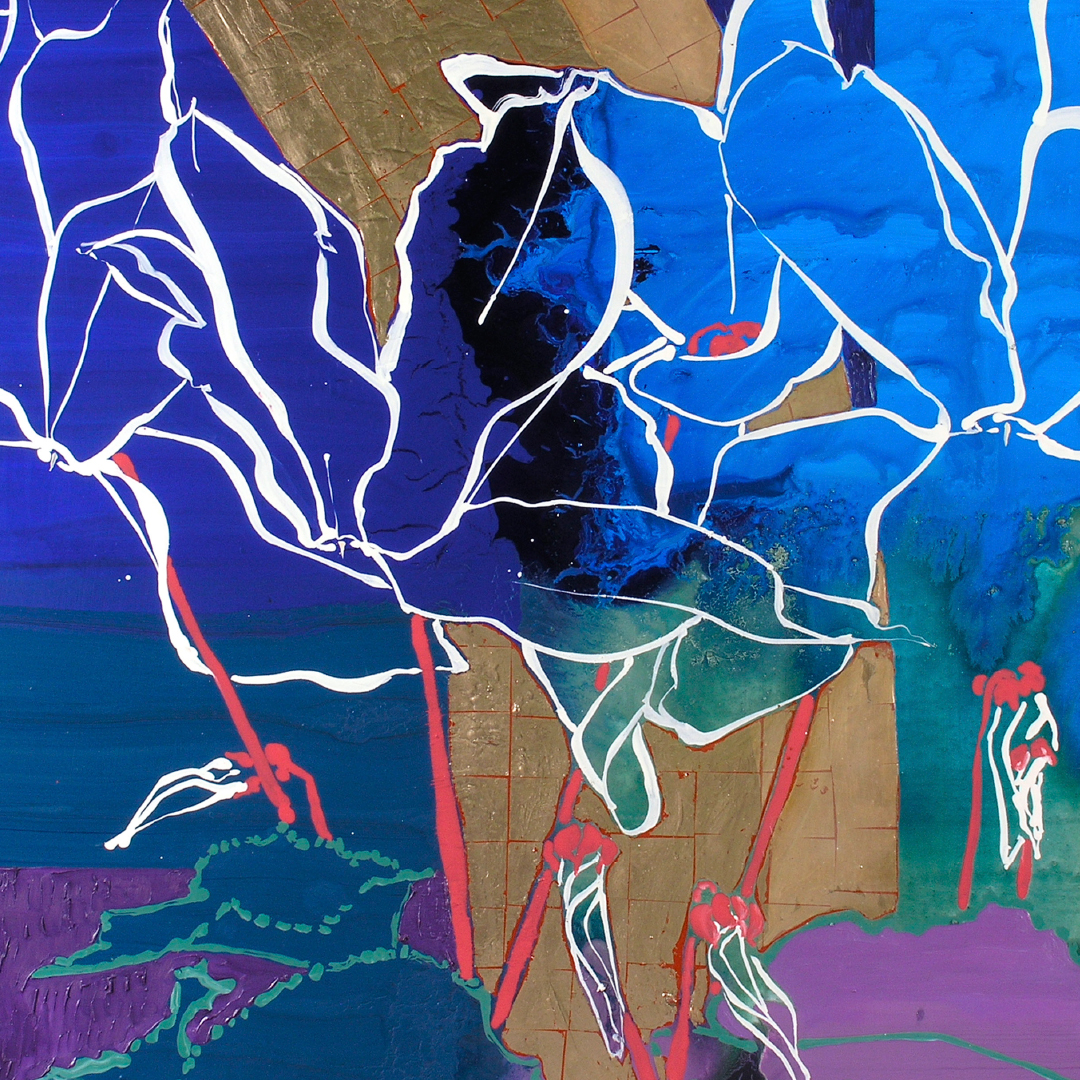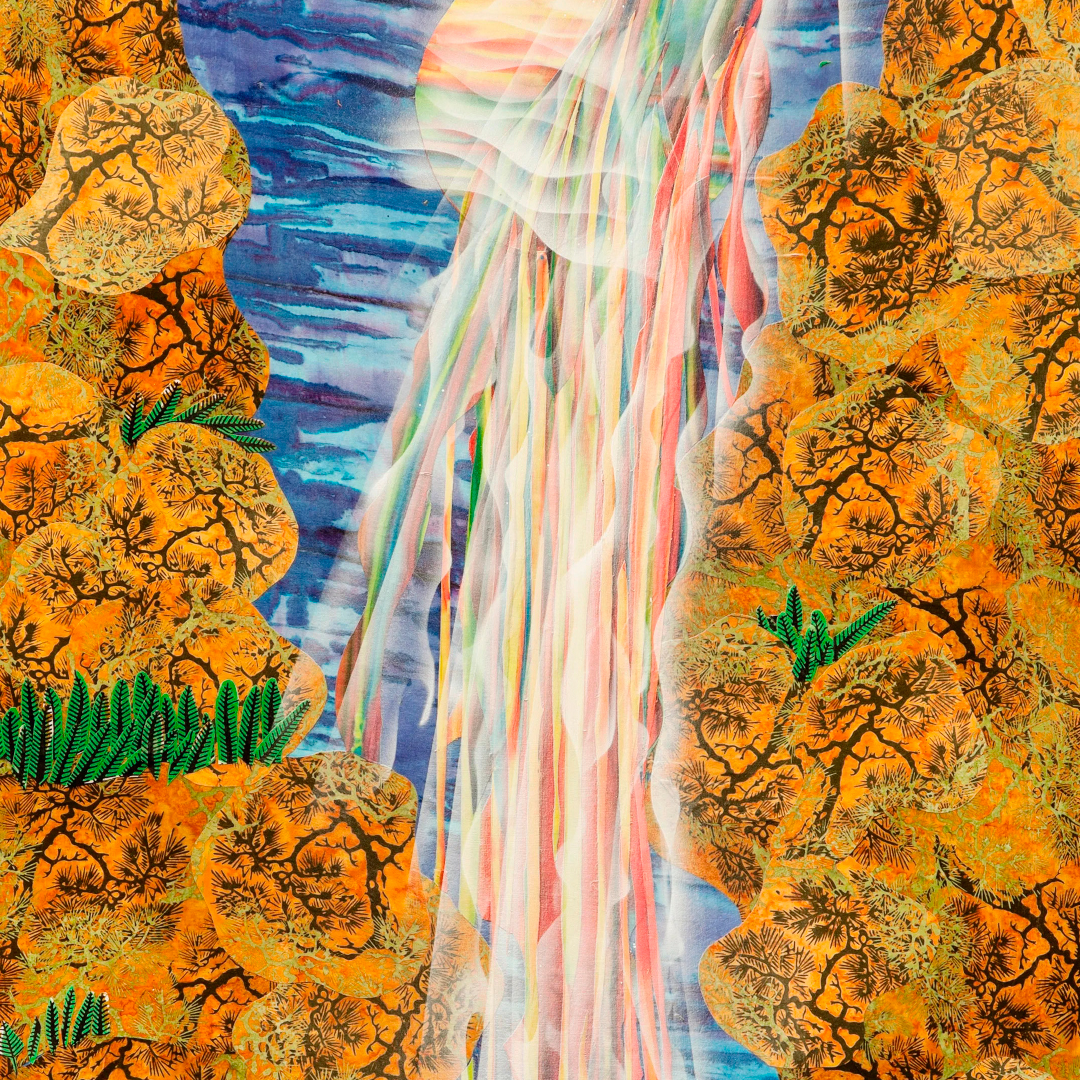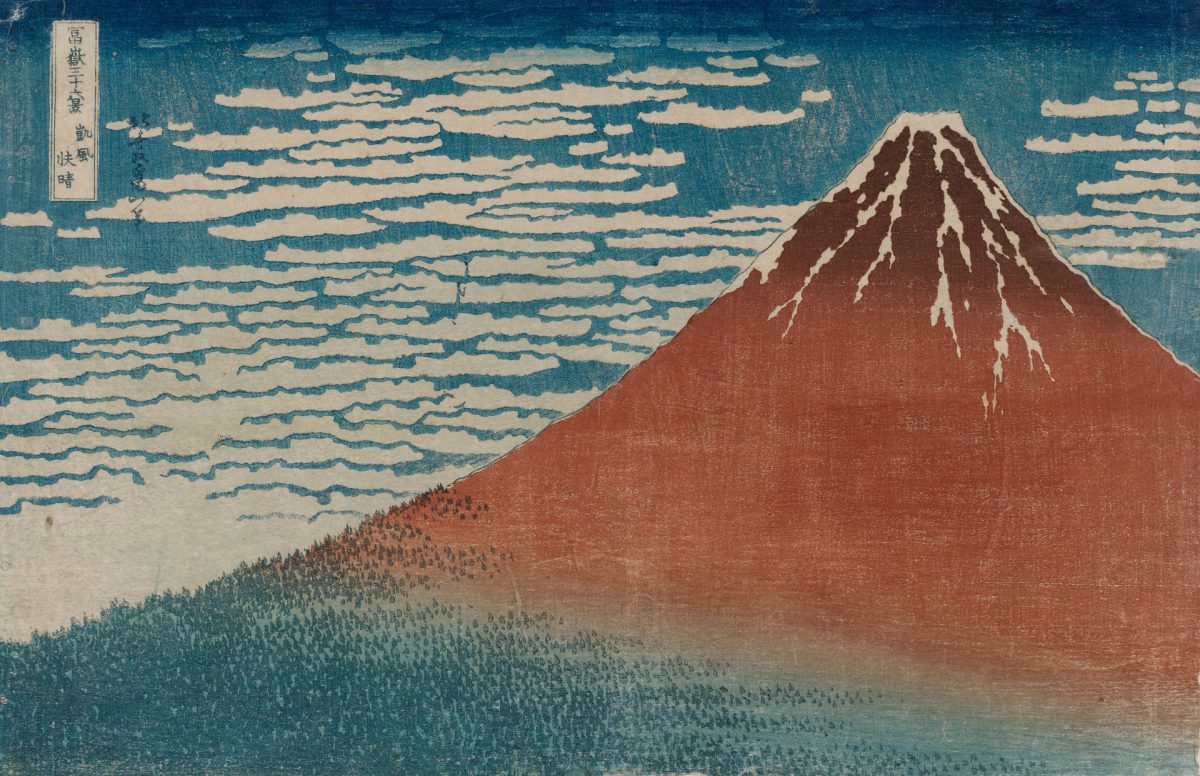Hokusai Smartphone Tour: White Cyclamen I
As a founding member of the 1970s Pattern and Decoration movement, American artist Robert Kushner favors geometric and floral patterns within his work. Like many of the artists in this movement, Kushner resisted conforming to the minimal compositions that dominated American artistic conventions at the time, opting instead to look beyond the nation’s borders for artistic inspiration.
His 1999 painting, White Cyclamen I, on view as part of Hokusai: Inspiration and Influence from the Museum of Fine Arts, Boston at SAM, features aesthetic resonances from Islamic tile work, Iranian carpets, and Japanese ceramics and woodblock prints. As part of the free smartphone tour of the ongoing SAM exhibition, Kendall DeBoer, Curatorial Assistant in the Department of Contemporary Art at the Museum of Fine Arts, Boston, spoke directly with the artist about how the work of historic Japanese artists, including Katsushika Hokusai, influenced the creation of this work and many others across Kushner’s oeuvre.
Tune in to this recording blick clicking the link above or by scanning the QR code adjacent to this artwork in the exhibition’s galleries. Listen to all seven stops of the audio tour of Hokusai: Inspiration and Influence via our SoundCloud. The exhibition closes later this month on Sunday, January 21. Don’t miss out—reserve your tickets to see it at SAM before it’s too late!
White Cyclamen I, 1999
KENDALL DEBOER: In the mid-1970s and 1980s, the Pattern and Decoration movement in the United States declared independence from the reigning Western aesthetics of masculinist Minimalism and defied Modernism’s rejection of ornamentation. Reveling in beauty and looking to global influences, Robert Kushner is considered one of the founders of this significant movement in American art. His colorful, blossoming, exuberant, sparkling canvases incorporate transhistorical points of aesthetic reference, including but not limited to Japanese woodblock prints. The magnified florals, like White Cyclamen I, pay homage in particular to Hokusai’s large flower prints.
While working on this exhibition, we were in touch with the artist directly. Thinking about Hokusai and his relevance to contemporary artists, Robert shared the following thoughts, which I will read on his behalf:
“When I look at the flower compositions of Hokusai, and indeed other Japanese masters, I am always drawn to the precision of line, the exactness of observation of the plant forms, and the grace with which they inhabit an open indeterminate flat space. Even more inspiring to me is the intentional and skillful flattening of the drawn lines. A single thin line can enclose the form of a flower’s petal or leaves, allowing the flat, unshaded white paper behind to create a three-dimensional volume. In my own paintings, such as White Cyclamen I, I try to paint with my own version of this manner of engaged, enlivened, observed, accurate, delicate, bold lines. Looking one way, the curving whiplash lines of my cyclamen and its leaves are scattered shapes on the colored surface behind them. But then, there is a magical moment when those lines coalesce into the volumetric form of the living flower that is before me. This is a wonderful lesson to be offered by Hokusai, a Japanese painter and printmaker from two hundred years ago.”
– Lily Hansen, SAM Marketing Content Creator
Image: White Cyclamen I (detail), 1999, Robert Kushner, American born 1949, oil, acrylic, and gold leaf on panel, Courtesy of the artist and D.C. Moore Gallery, New York, NY.


